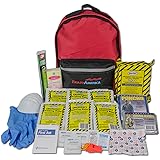Define Your Goals and Objectives
Identify the Purpose of Your Alert System
When I first decided to create a community alert system, I was all about the purpose. What did I want to achieve? I realized it was crucial to pinpoint whether it was just for emergencies or to share updates on community events. This clarity helped set the stage for everything else.
Next, I had to consider the different types of alerts I wanted to send. For example, natural disaster warnings, missing person alerts, local event notifications, and even urgent news updates about road closures. Each of these had its own unique audience and delivery method.
Lastly, I made sure my objectives were measurable. I wanted to set benchmarks, like how many people I aimed to reach or how quickly we could deliver alerts. Without clear goals, it’s easy to get overwhelmed and lose sight of why you started.
Choose the Right Communication Tools
Assess Available Technology
Choosing the right tools for my community alert system was kind of like shopping for a new phone. There were so many options, and each had its ups and downs. I started by evaluating what was currently available—everything from SMS texts to social media alerts and even good old-fashioned emails.
Next, I considered the tech-savviness of the community. Would most folks prefer a text message over an email, or were they glued to their phones scrolling through Facebook? Understanding this helped narrow my choices significantly.
Lastly, I did a test run. Before going live, I set up a small group of volunteers to trial the selected communication tools. This way, I could gather feedback and make necessary adjustments without causing too much chaos in the actual community.
Engage and Inform the Community
Build Awareness and Get Feedback
I found that engaging the community was key to the success of my alert system. First off, I organized community meetings—good, old-fashioned town halls where everybody felt welcome. These gatherings opened a dialogue, and I encouraged feedback about what people wanted to see in the alert system.
After these meetings, I took to social media as well. Platforms like Facebook and Twitter became essential for outreach. I kept posts engaging, emphasizing how the alert system could benefit everyone. Keeping the conversation flowing really helped in building that excitement and trust.
== > What if ... Get a FREE Subscription to PREPARE
Lastly, I made sure to continuously invite feedback even after launching. I set up an easy online survey that the community could fill out anonymously. This was a game changer! It allowed people to voice their opinions without any hesitation.
Establish Protocols for Alerts
Set Guidelines for Sending Alerts
Creating protocols for sending alerts was critical. I learned that setting too many rules could actually confuse people. Instead, I focused on a few key guidelines: what constitutes an emergency, how quickly an alert needs to be sent out, and who is responsible for sending them.
Get Preparedness and Self-Reliance Tips. Subscribe Now!
To keep it simple, I categorized alerts. For instance, immediate threats like fires or floods would take precedence, while community updates could wait a bit longer. Establishing a tiered system made everything more manageable.
Finally, I decided to roll out practice drills so that everyone involved—whether it was team members or volunteers—knew exactly what to do in a crunch. Practice makes perfect, and it was reassuring to see everyone getting into the groove!
Evaluate and Refine the System
Analyze Data and Feedback
Once my community alert system was up and running, I learned the importance of evaluating its performance. I made it a habit to analyze data after each alert went out, looking at things like response rates and engagement levels. This helped me understand what was working and what wasn’t.
Furthermore, I always circled back to that initial feedback I collected from residents. Did their needs change? Were there new services, like a new neighborhood watch group, that could benefit from alerts? Listening to the community kept my system relevant.
Lastly, I incorporated a quarterly review, gathering volunteers and community members to assess our successes and challenges. It was a way of keeping everyone engaged while ensuring we continued refining the process for maximum impact.
FAQs
1. What is the purpose of a community alert system?
A community alert system serves to inform residents about emergencies and important community updates. It helps ensure that the public is quickly aware of critical situations and can respond effectively.
2. What communication tools can be used for alerts?
You can use various tools such as SMS texts, emails, social media platforms, and even local news broadcasts to communicate alerts. The key is to choose whichever method works best for your community’s preferences.
3. How can I encourage community participation?
Engagement starts with awareness. Organize community meetings, use social media for outreach, and promote the benefits of the alert system. Encourage ongoing feedback to foster a sense of ownership in the system.
4. What types of alerts should be included?
Include a mix of alerts that cover immediate emergency situations, local event notifications, and safety announcements. Tailoring the types of alerts to your community’s needs helps in gaining and maintaining interest.
5. How often should I evaluate my alert system?
It’s beneficial to conduct evaluations at least quarterly. This allows you to analyze performance data and community feedback regularly, ensuring the system remains effective and relevant to the community.






